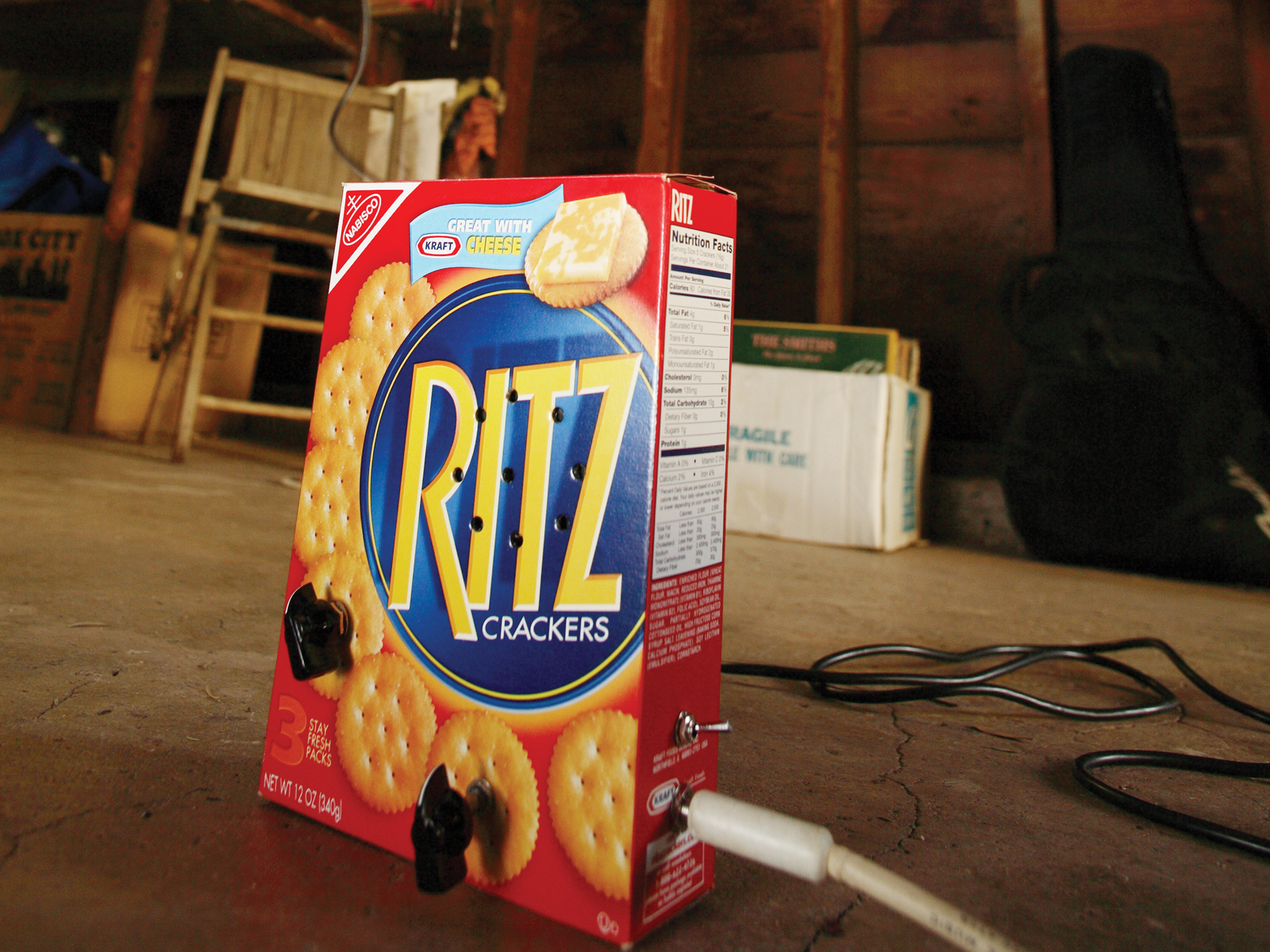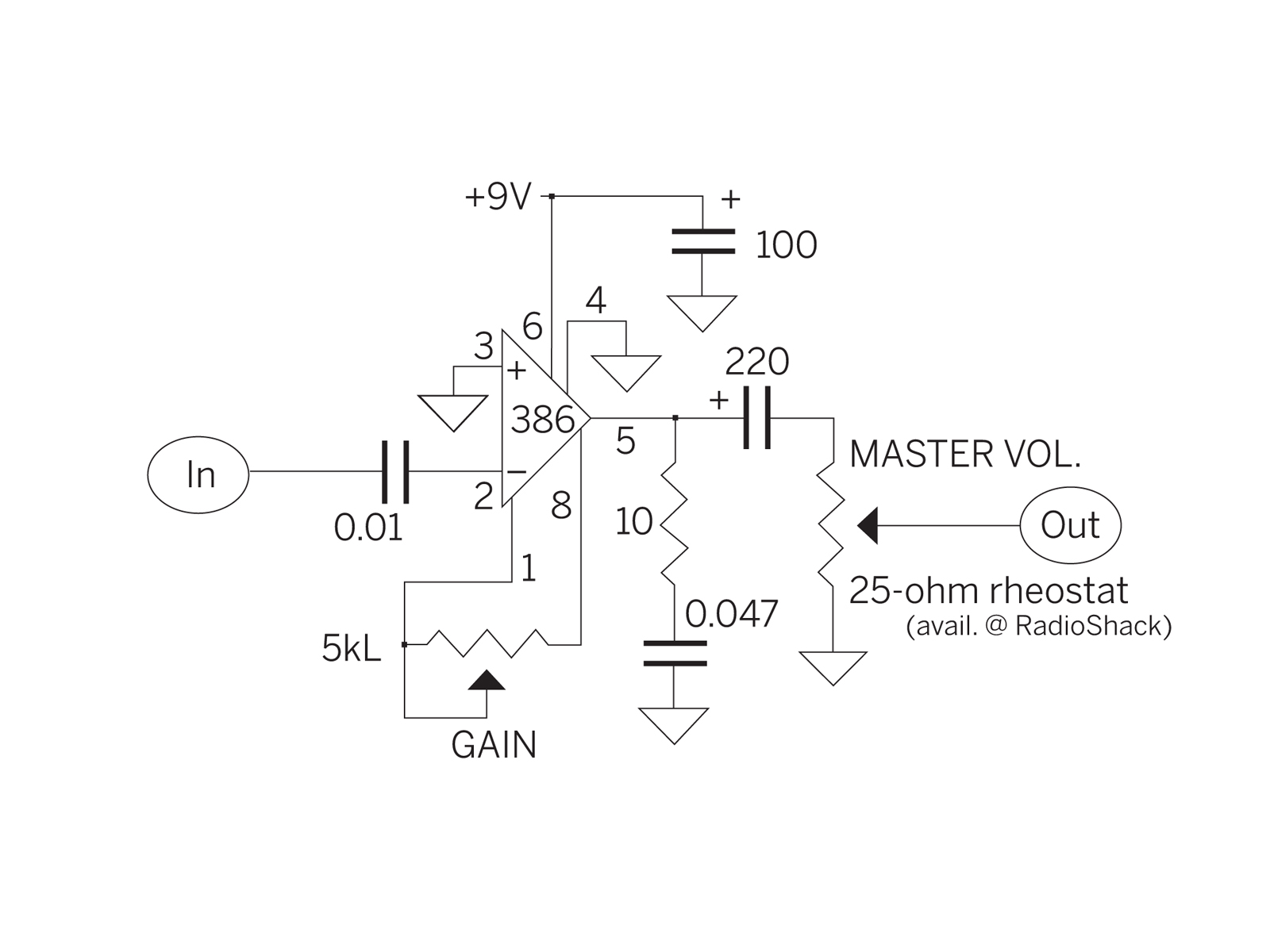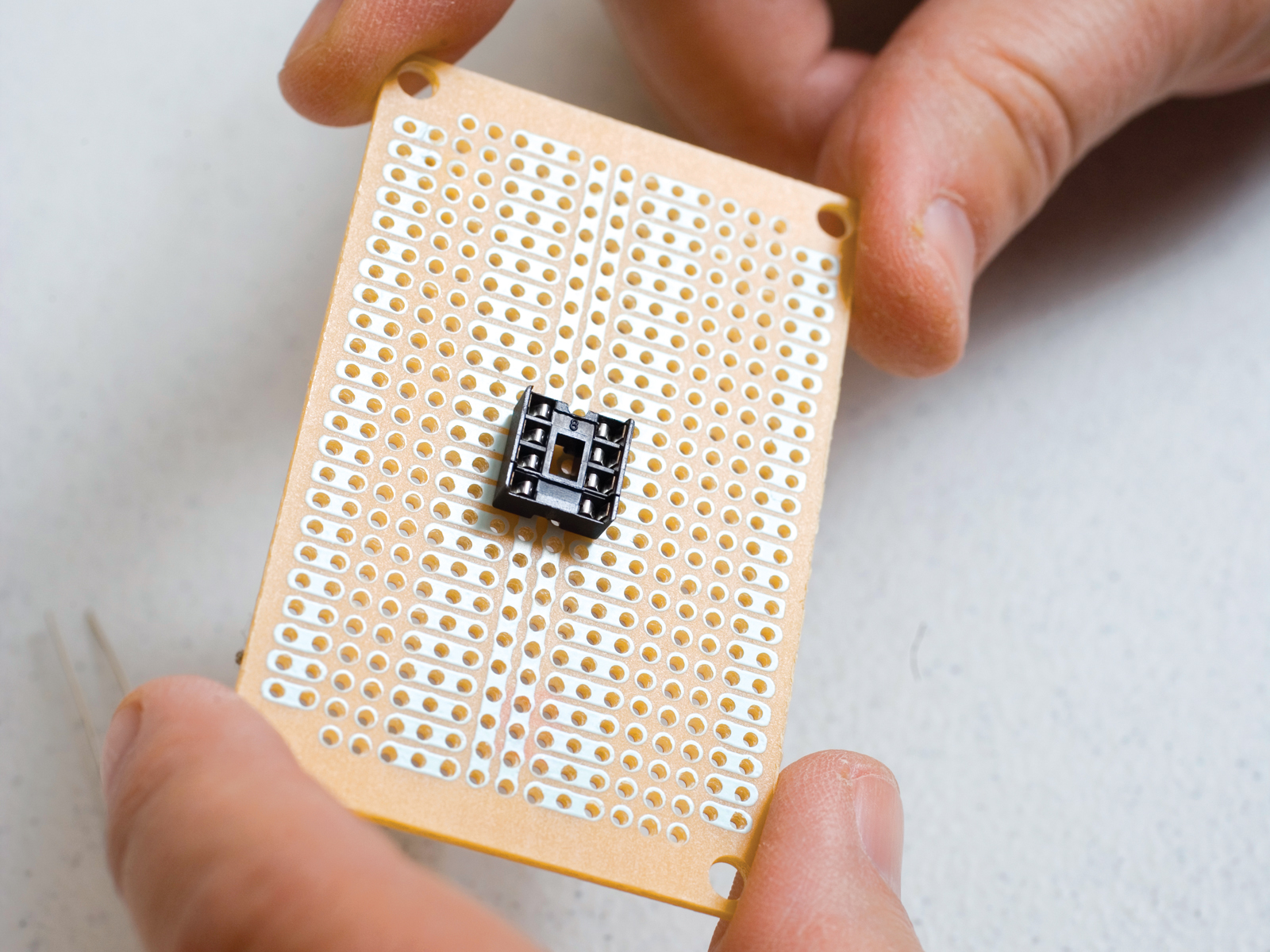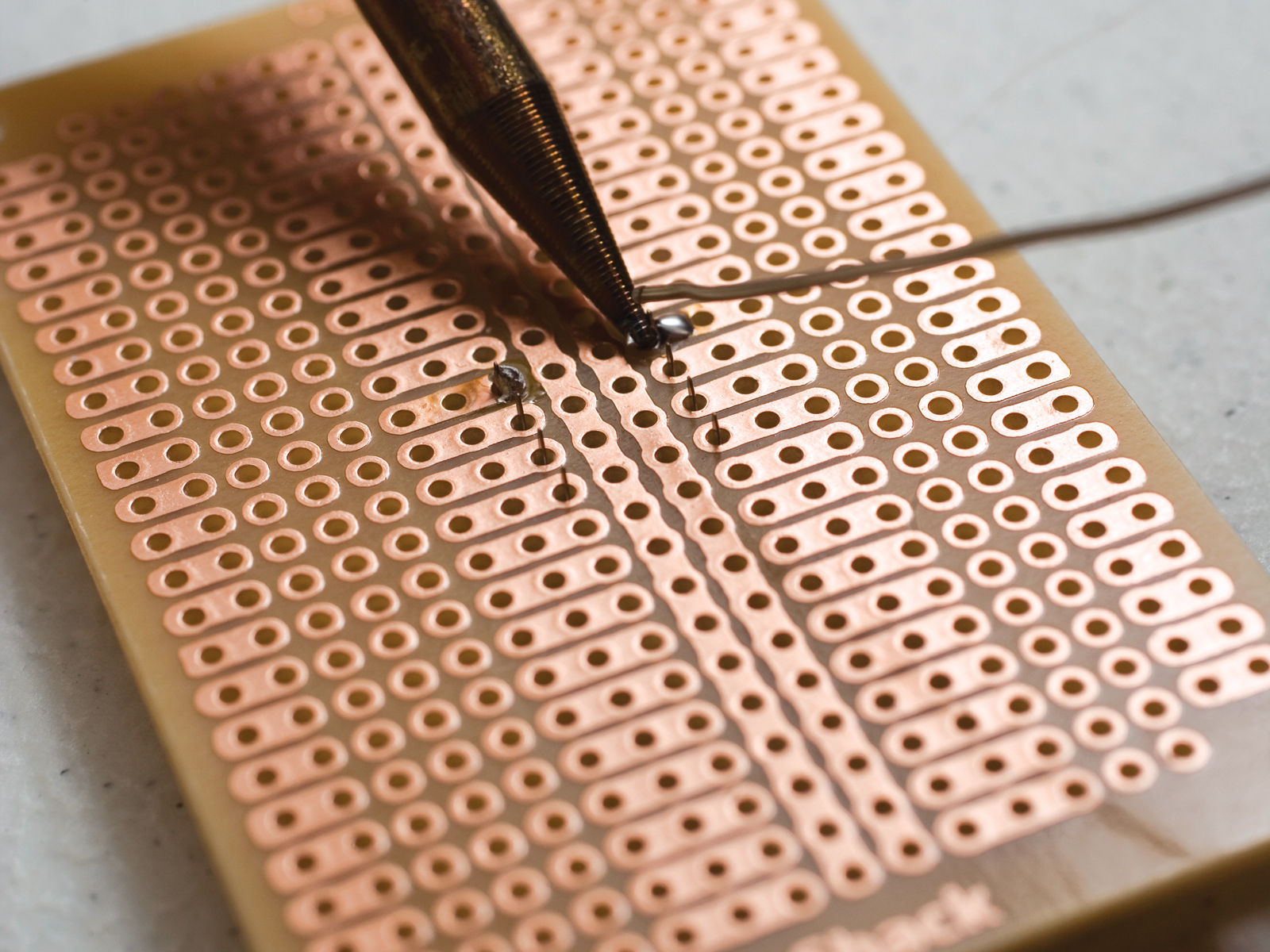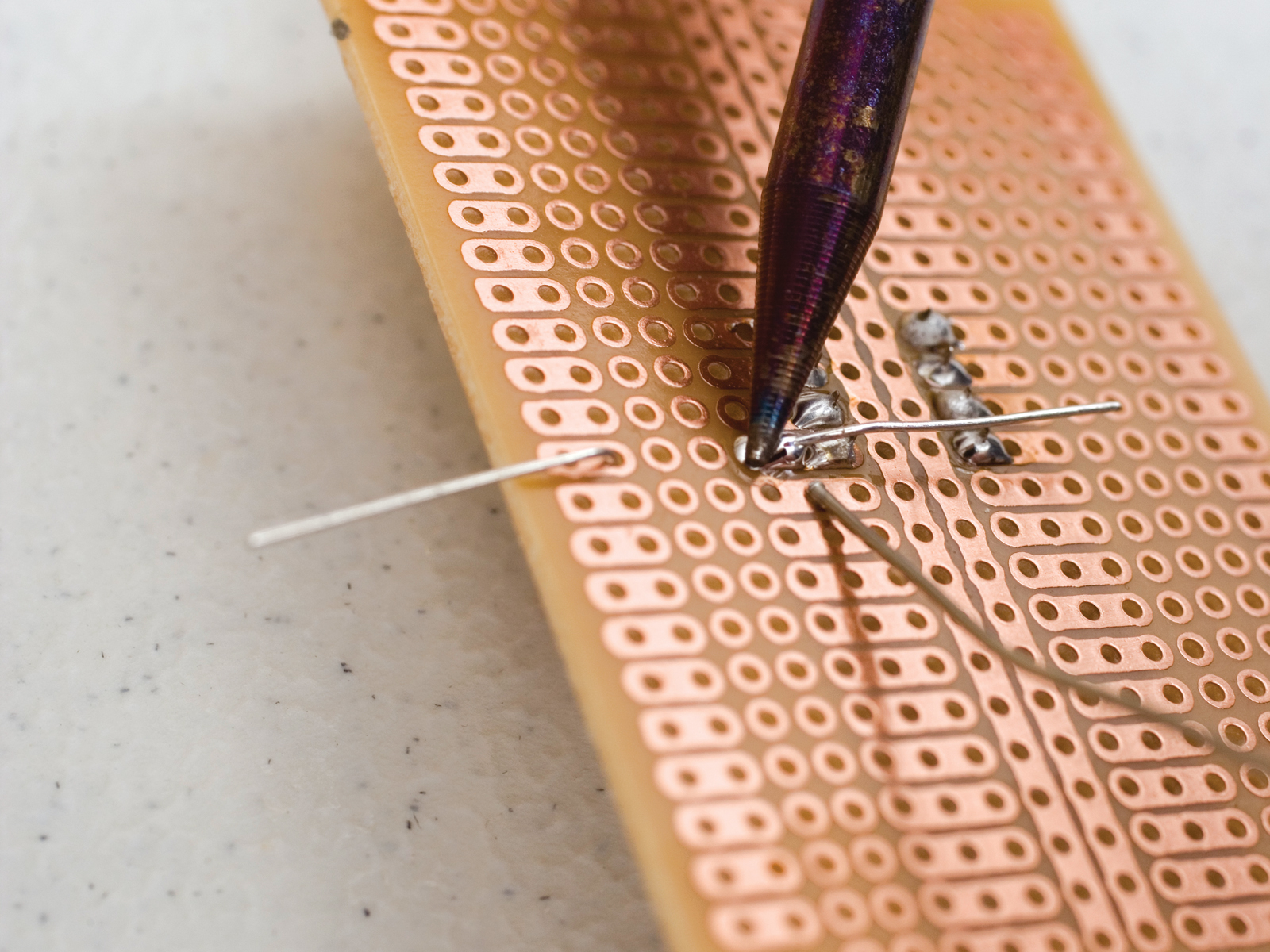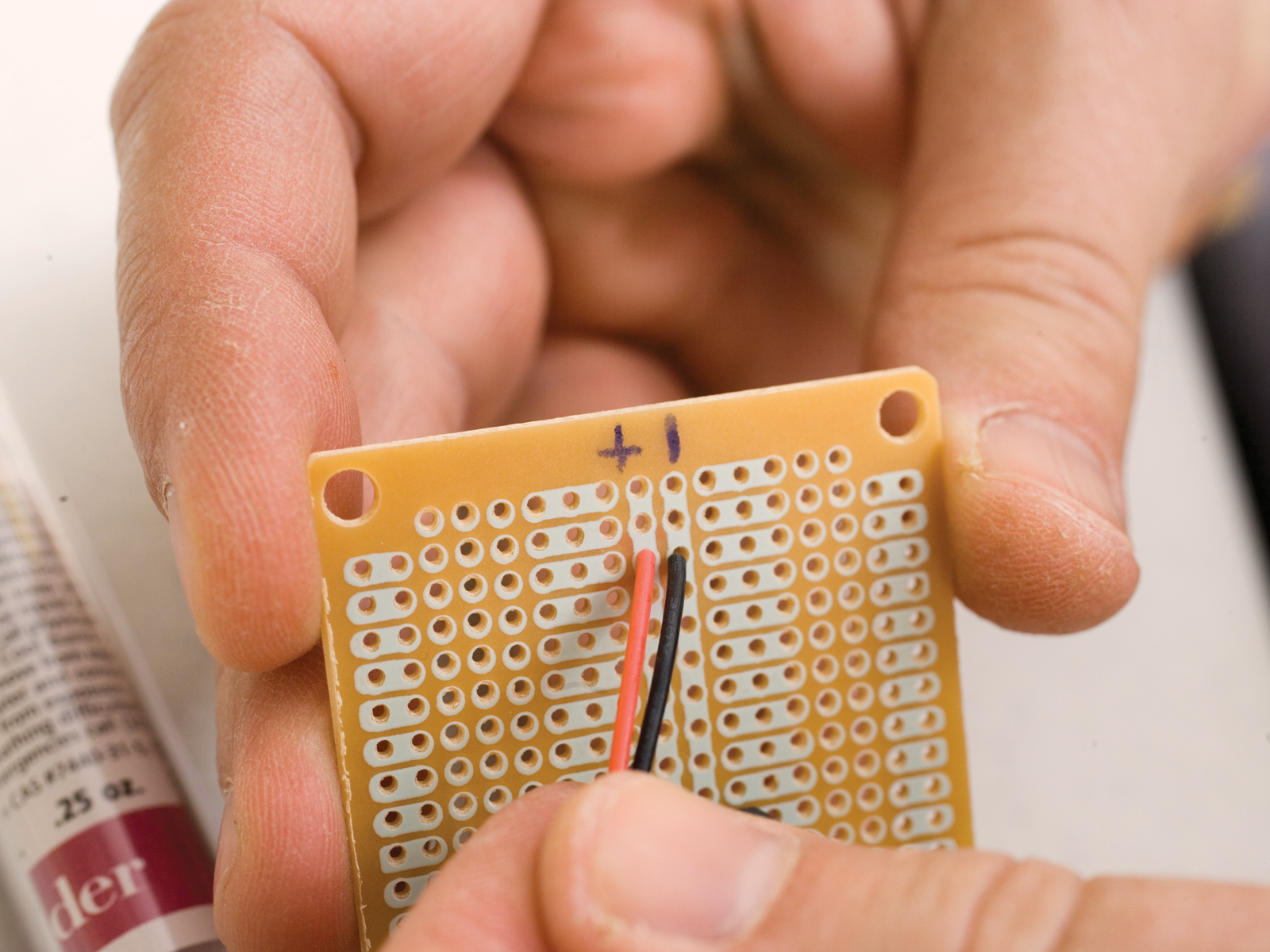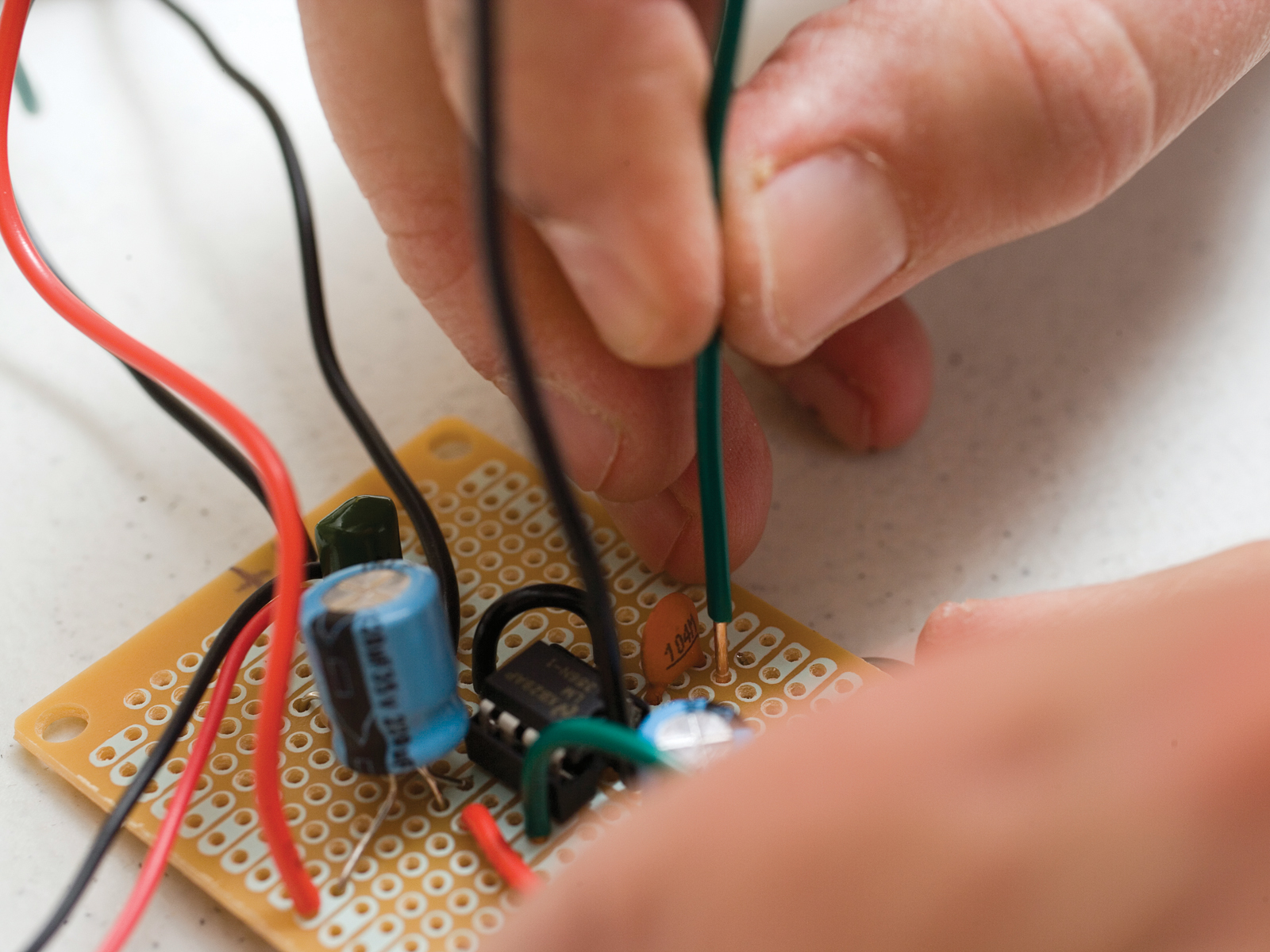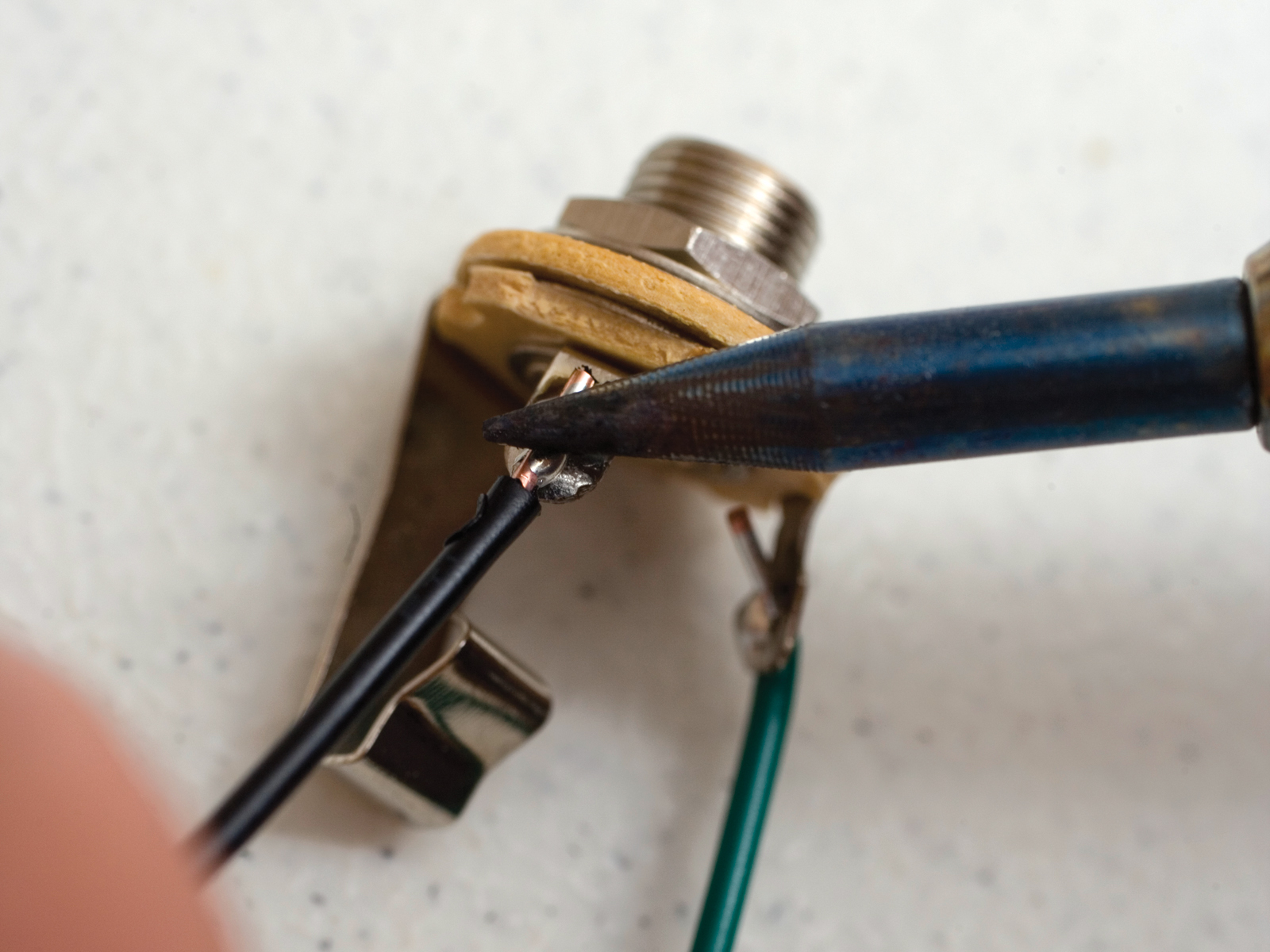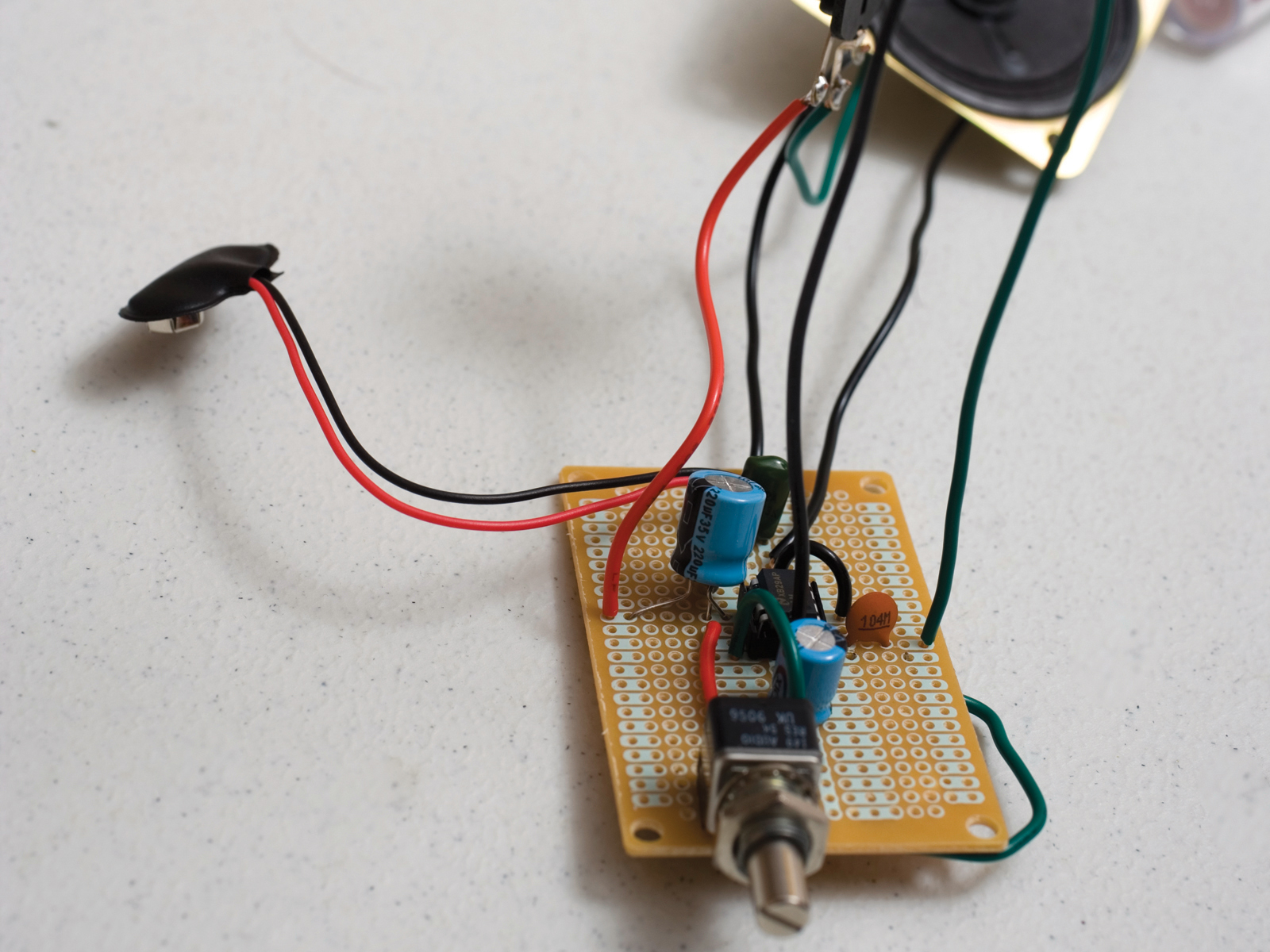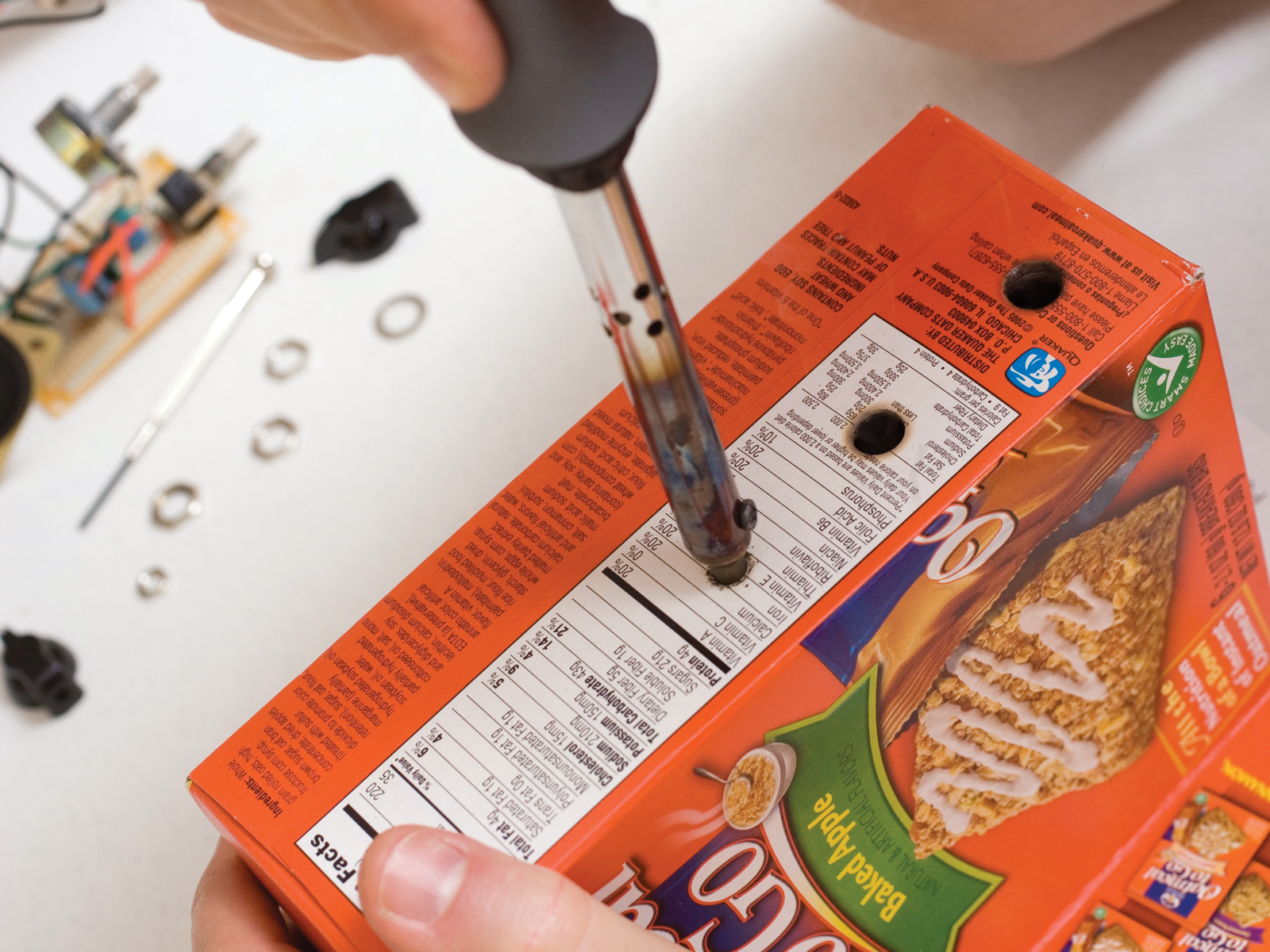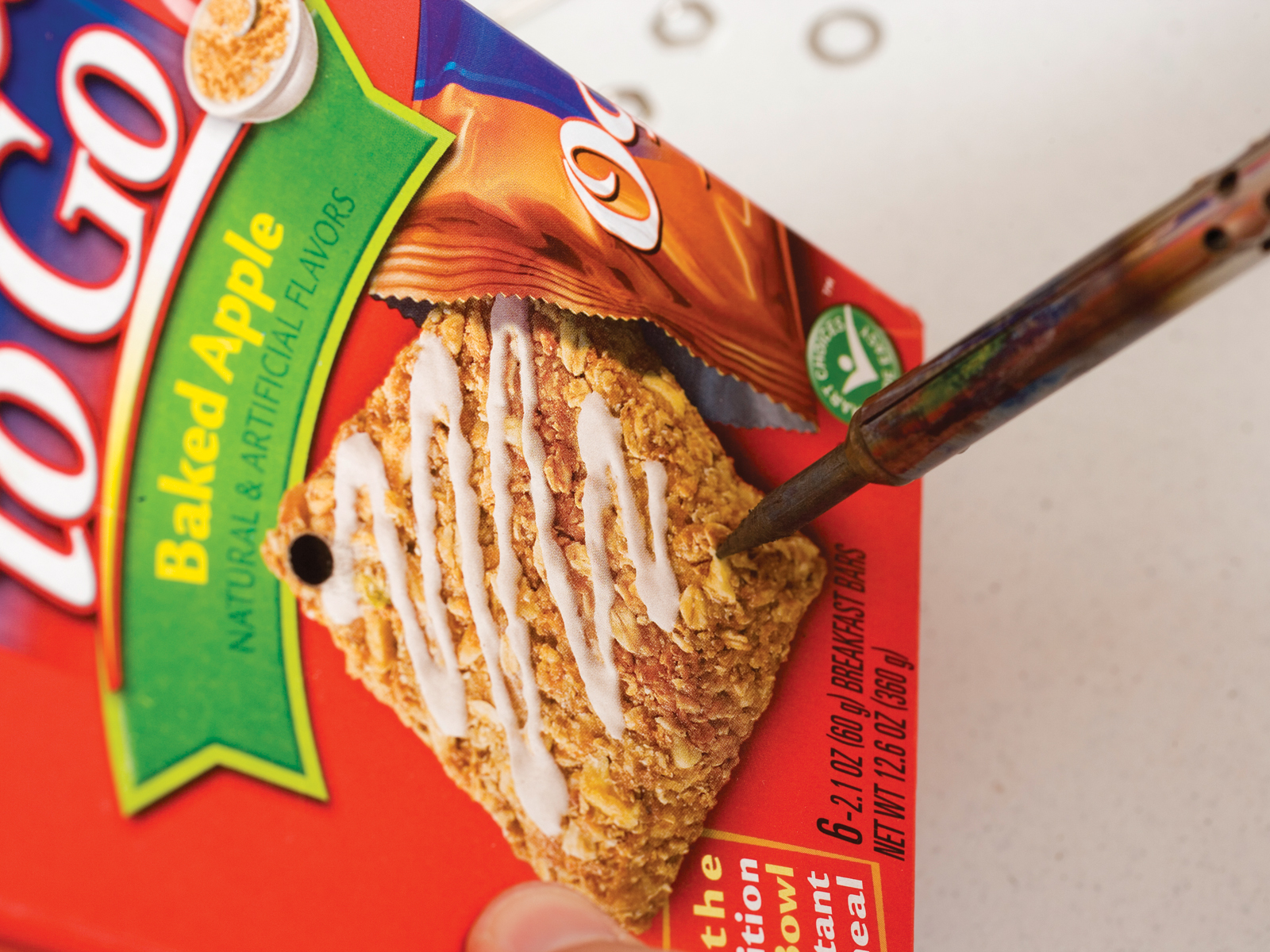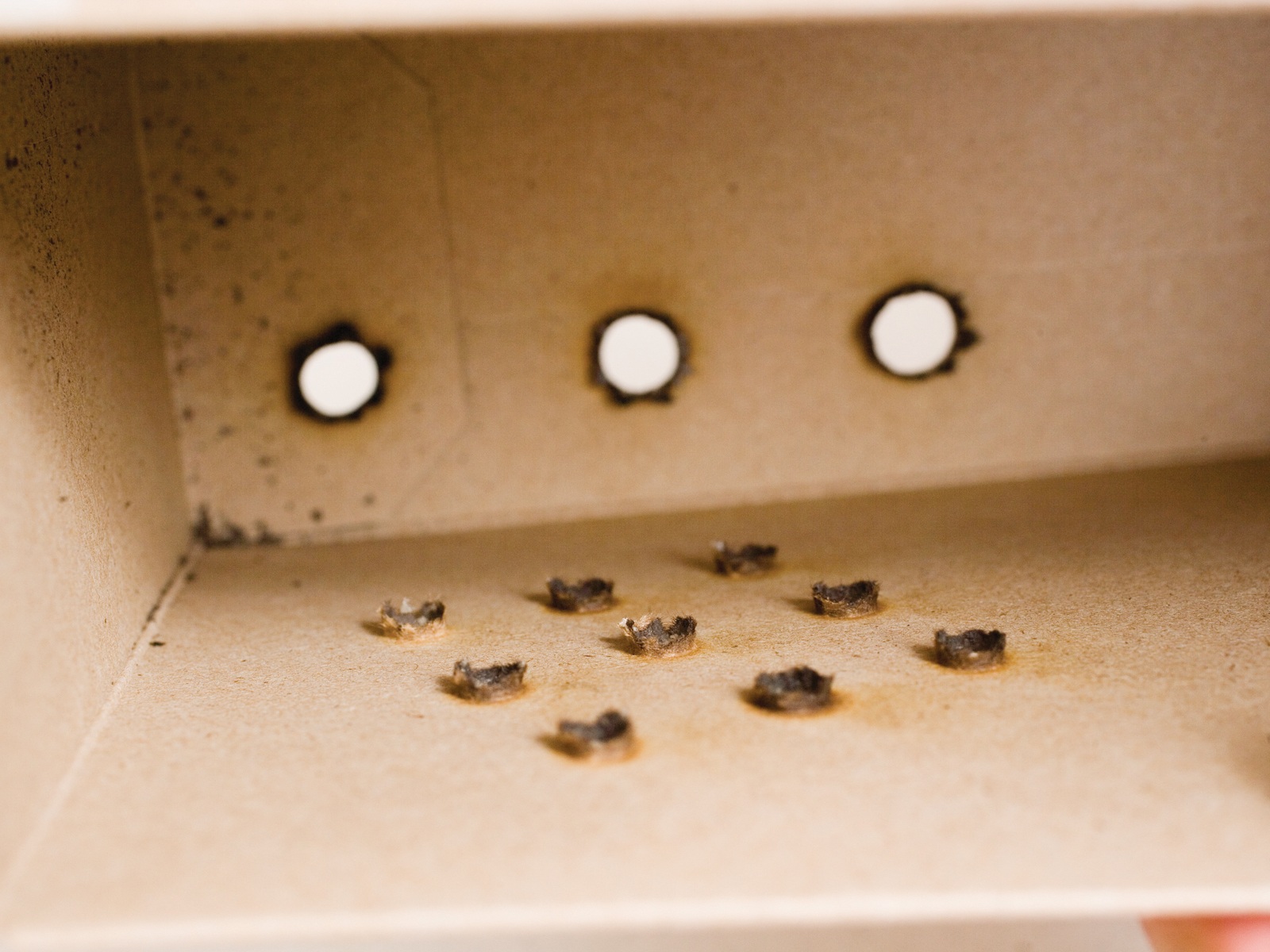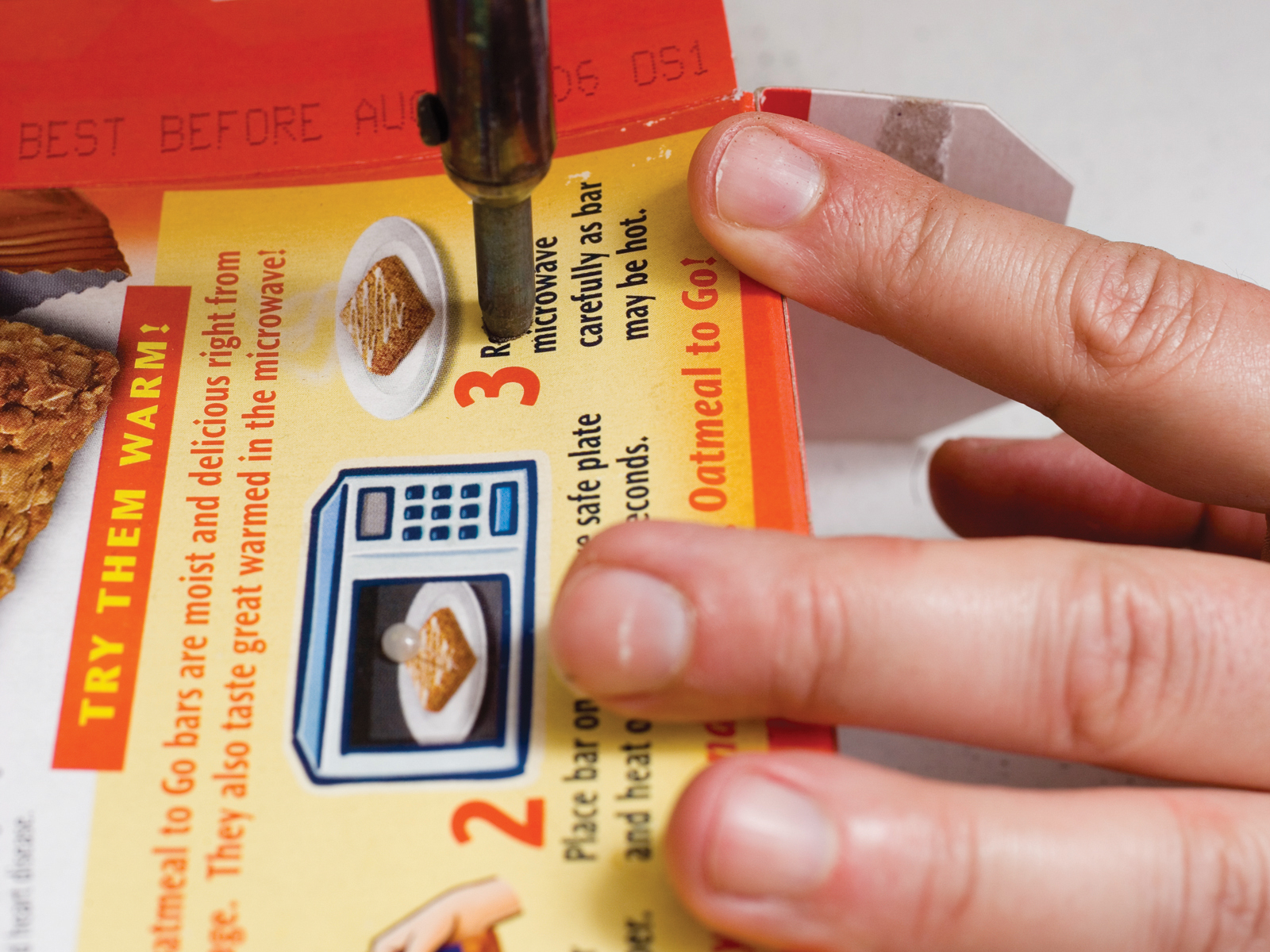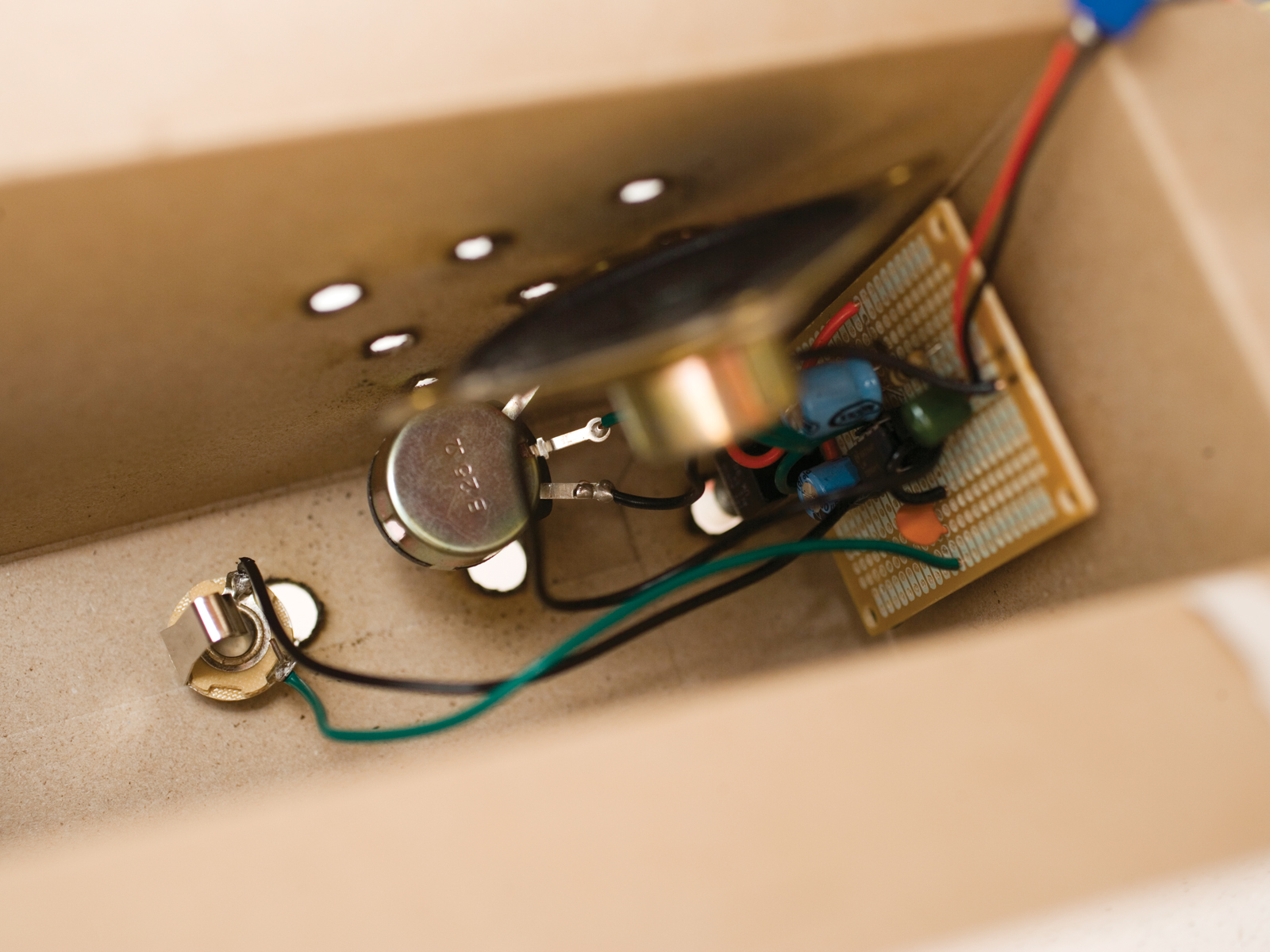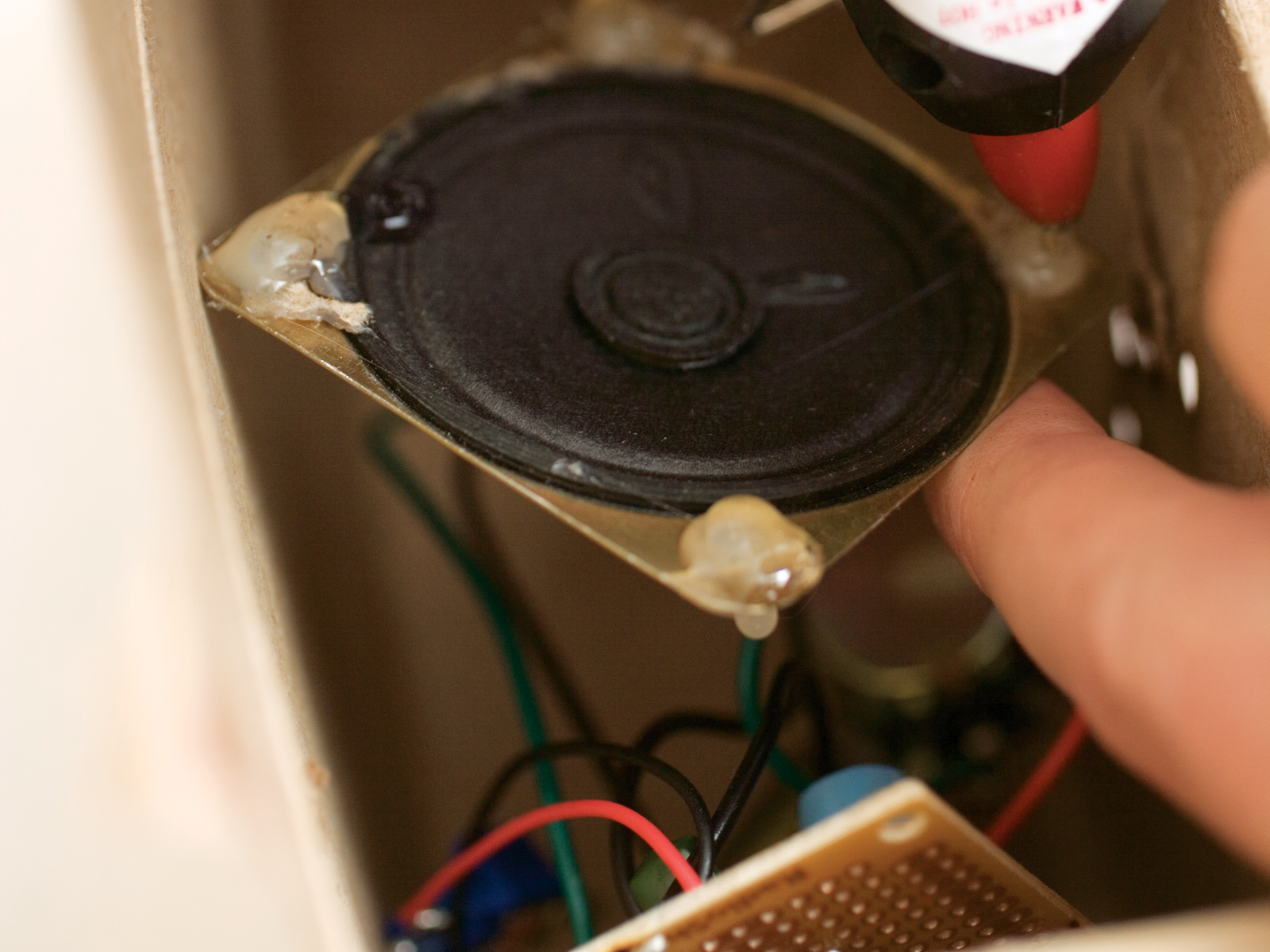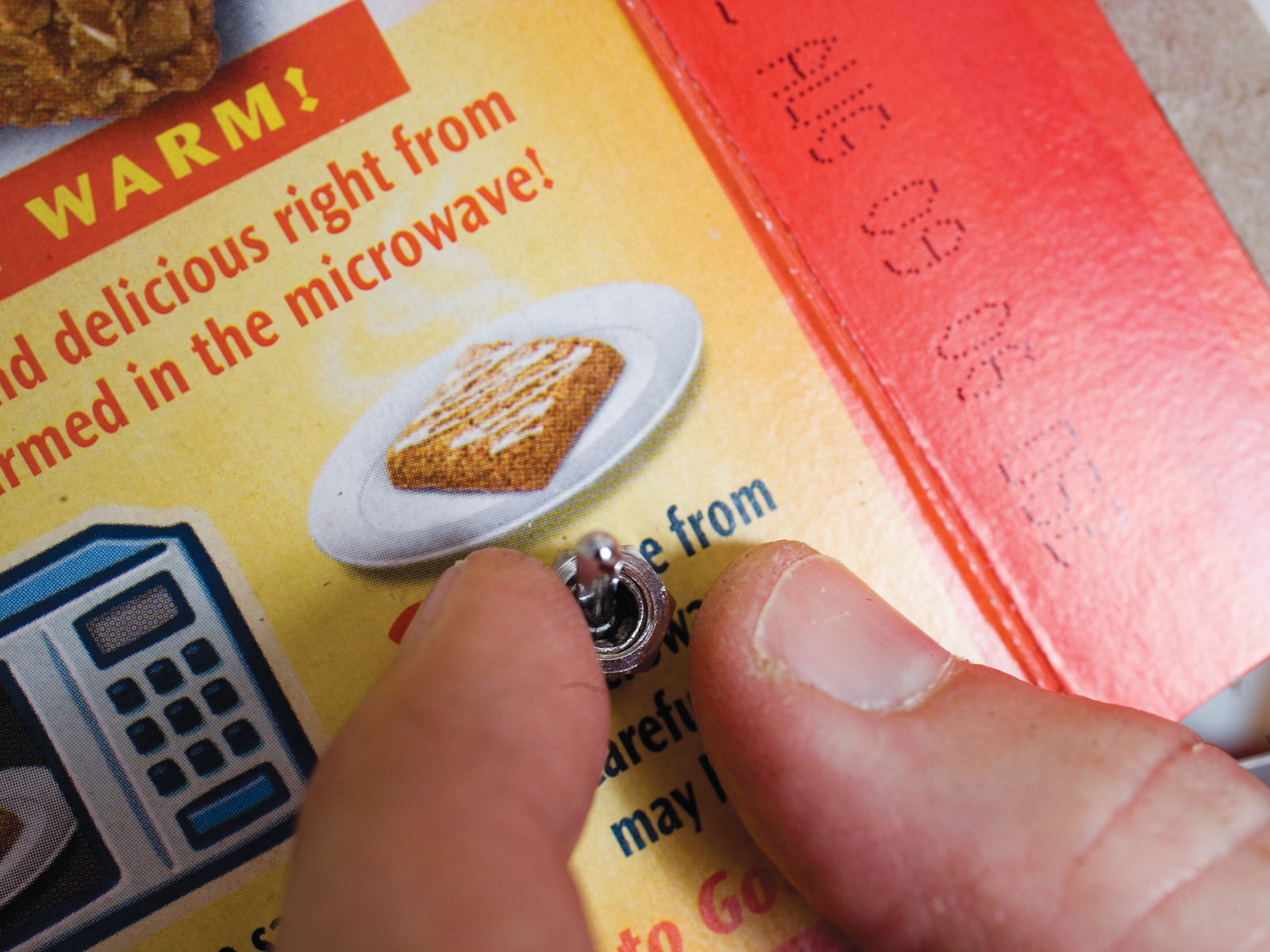The Origins of the Cracker Box Amp
The cracker box amp I built cost $5. It uses an 8-pin National Semiconductor LM386 series low-voltage op-amp IC. The amp circuit unleashes the full potential of this beast and creates 1 watt of arena-shaking power. Think of it as sort of a silicon shrunken head of the Marshall stack that Jimi Hendrix played at Monterey.
This integrated circuit has provided the basis for low-power solid-state amplifiers in recent years, including the famous Smokey Amp and a few of the designs at http://runoffgroove.com.
You can buy an LM386 for under a buck; it’s a standard RadioShack item, the same one that was used in the MAKE project for turning your old computer mouse into a robot (see MAKE, Volume 02, Mousey the Junkbot). Our favorite hobbyist robot supply source, Solarbotics, sells them for 75¢ a piece.
I added a couple of capacitors, a couple of resistors, an LED, a 1/4“ jack, a potentiometer, and a $2 speaker, wrapped it all in a big blob of solder, crammed it in whatever empty box was laying around, and voilà!
The pot controls the gain, and it goes from California clean vintage Fender to Santana Mesa Boogie crunch to Hendrix Marshall. It runs off any combination of batteries — I usually use a 9V, but it’s possible to get a cleaner tone with 12V (8 AA batteries in series). I have used it to drive a 412 Marshall cabinet, and it gets pretty loud. Not loud enough to compete with a rock drummer, but loud enough for me not to hear my wife screaming “turn it down,” which I guess is enough for household use. If we had any neighbors, I could raise some complaints from it. Let’s just say that even with a 2” speaker it’s plenty loud enough for most apartment dwellers.
Interested in learning a bit more about the LM386? A great place to start is National Semiconductor’s website (http://national.com) where you can download the data sheet. Even better, if you take the time to register on the site, they will generously send you a few samples for free!
Ask for the LM386N-4 series, as these are rated to handle up to 18V. Although any of the LM386 chips will work wonderfully for our hi-gain design, several experimenters and makers have found that cleaner tones with more headroom are achievable by running the circuit with a few extra volts.
See videos of Blind Lightnin’ Pete playing his cigar box guitar through his cracker box amp at https://makezine.com/09/crackerboxamp.


